Edible Gardening Essentials: Tips for Traditional Hand Watering
In this day of elaborate drip and irrigation systems, it can be easy to dismiss old-fashioned watering by hand as too time consuming and not water efficient. Those concerns are valid, and a drip system is certainly the system of choice for many edible gardens. However, these systems take time to set up and, in the case of irrigation systems, can be expensive. If your space is small, your plants are scattered or you garden primarily in containers, and you aren’t ready or can’t commit to a more elaborate system, using a watering can or a hose may actually save you water and time in the long run.
The obvious advantage is setup. It takes almost no time to fill a watering can or attach a nozzle to the end of a hose. You can also direct the water precisely where you want it: into a watering basin around a tree, into individual pots, around the base of a squash plant. There’s no water wasted on dirt (or weeds), and you can prevent the splashing on leaves that can cause a fungus to develop. Spending some time each day watering individual plants, and taking a close look at them at the same time, also means you’ll be more likely to spot any developing problems and take care of them before they get out of hand.
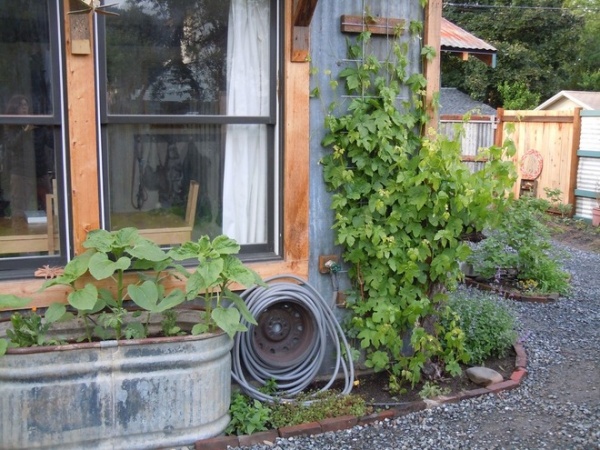
Best for: Containers and small or irregularly shaped gardens
Benefits: You can control when and where you water; you will naturally keep a close eye on developments in your garden.
Drawbacks: You can’t “set and forget” a watering system; lugging hoses and heavy watering cans can be tiring.
Cost: From $10 to $100 (sometimes more for heavy-duty versions) for watering cans, hoses (including a soaker hose), hose-end nozzles and aboveground sprinkler systems
Lever of difficulty: Easy
Time commitment: Moderate to heavy, depending on the size of your garden
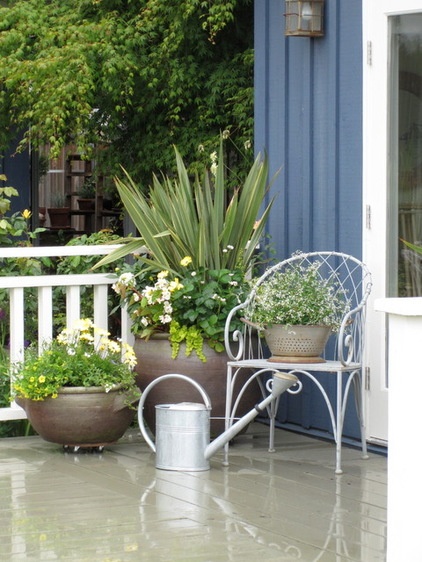
Watering Cans
There is nothing more charming than a watering can perched on a porch or by a potting bench. It’s also practical. You can fill it with enough water to water several plants, but not so much that it’s hard to lug and hard to pour. Watering cans are particularly good for container gardens and for overhead watering of individual plants that don’t mind getting their leaves wet.
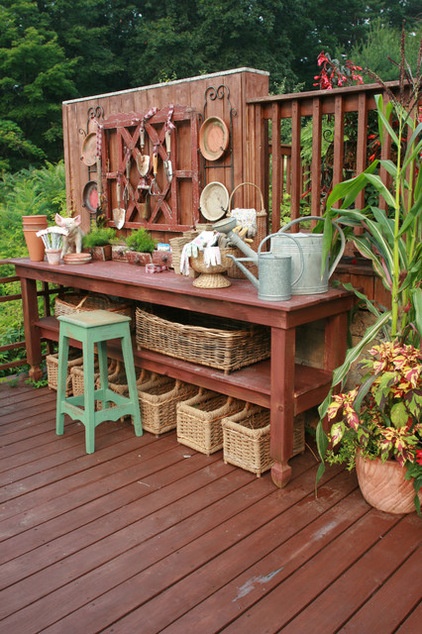
Choose a sturdy one to match your garden style: galvanized metal for a traditional look, brightly colored hardened plastic to fit into a modern garden or softly colored cans for a cottage feel. A small one is good for smaller plants; a larger one will allow you to water larger plants thoroughly without having to refill the can.
You don’t absolutely need a rosette at the end of the watering spout, but it does help divert the force of the water and spread it out over the entire plant. Choose the size to fit your plants and containers — some rosettes may be so large that the spray pattern extends beyond the plant or container.
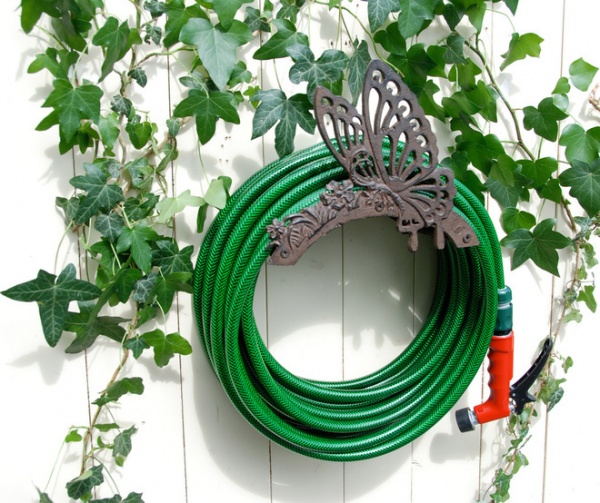
Hoses
Your other option, in addition to or instead of a watering can, is a hose. Hoses allow you to cover more ground without having to go back to refill a container with water. They also let you reach underneath a plant or fill a basin or furrow with minimum fuss.
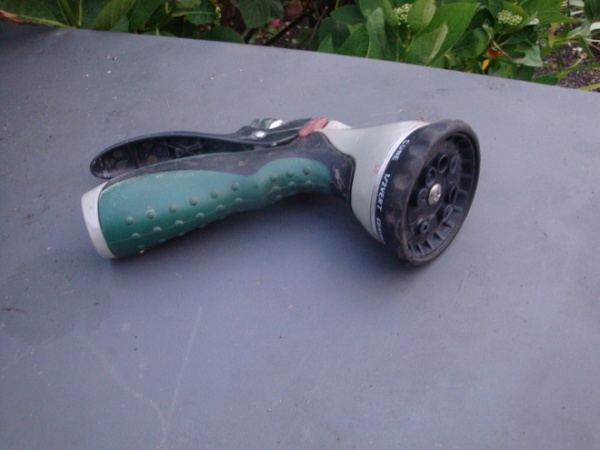
Hose-end nozzles. You can always use the tried-and-true thumb-over-the-end-of-the nozzle method of directing the water. However, it’s more effective and saves water to attach a hose-end nozzle. A simple one is fine, but if you’re watering a variety of areas, it’s probably worth spending a few bucks more to get one with several options, such as a misting spray as well as a shower or rain option. These will allow you to keep the soil wet when you’re starting seeds and later water without hurting delicate seedlings or washing out the soil.
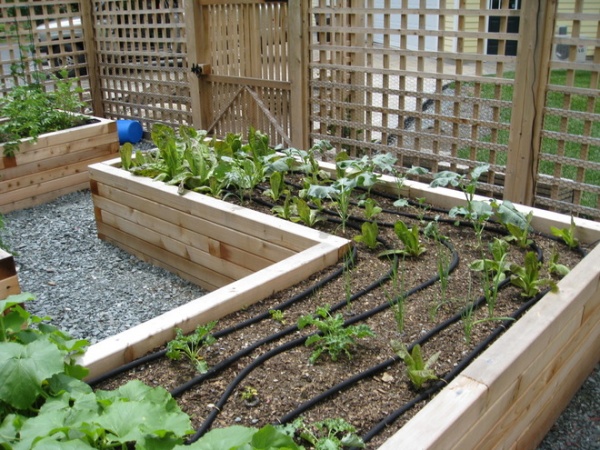
Soaker hoses. Other hose-end options include soaker hoses and sprinklers. You’ll still have to attach the hose and turn the water on and off, but you won’t need to stay with the hose while you’re watering. If you’re forgetful about turning the water off, you can get a timer that attaches to your system and will turn it off (and sometimes on) for you.
Soaker hoses can be snaked through garden beds next to the plants. Attach a hose to them, turn them on and let the water slowly seep into the ground. For an edible garden, choose one in which the water seeps out of the sides rather than sprays out the top of the hose.
Soaker hoses work very well for closely planted edibles and those in larger containers or garden beds. You can cover them with mulch; just be sure that the mulch doesn’t crowd the stems of the plants.
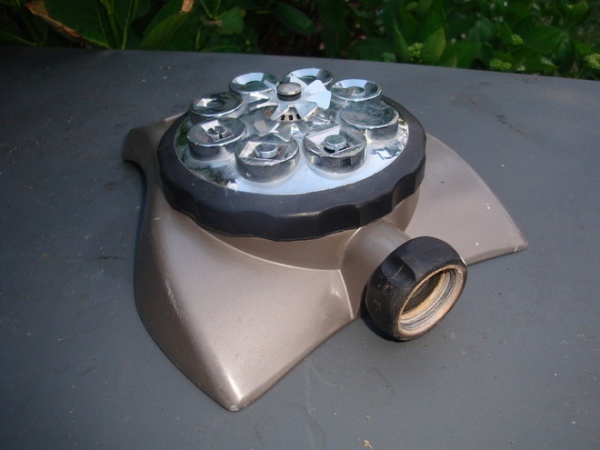
Hose-end sprinklers. Hose-end sprinklers can also be set in a garden bed and used to cover an entire area at one time. Like a soaker hose, it will free up your time during watering cycles. You’ll need to water early enough in the day so that the leaves of fungus-susceptible plants won’t stay wet at night. You will also run the risk of watering areas that don’t need it, such as sidewalks, and encouraging weeds in unplanted areas. To prevent the former, look for a sprinkler with several options for spray patterns.
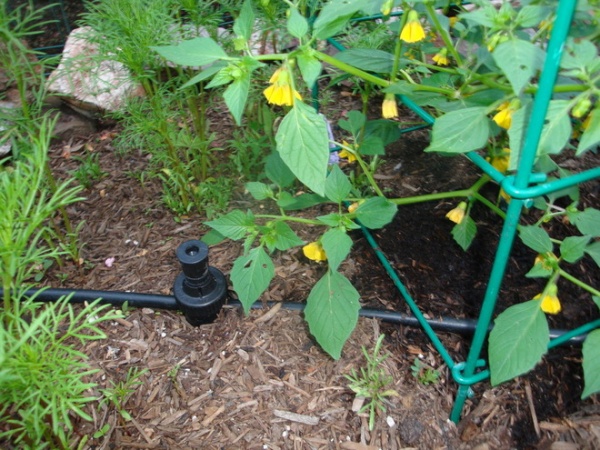
Aboveground sprinkler systems. If you have several areas that are fairly close together and have a regular shape, consider an aboveground sprinkler system. As with a drip system, a main line stretches from 50 to 100 feet with a cap on one end and a hose attachment on the other. Up to five spray heads, with options for spray direction and coverage, can be placed along the main line and staked in the ground. Lay the hose through the garden, decide where the sprinklers should be, then punch the sprinklers through the hose and stake them in the ground. Adjust the spray direction and spray width, then attach the hose to the sprinkler and water up to five areas at a time. You can buy a kit or make your own.
Root feeders. If your edible garden includes fruit trees, you can also use a root feeder or root soaker periodically to deep water the tree roots. These can be found and nurseries and garden supply and home improvement stores. Simply stick the soaker in the ground within the drip line of the tree, attach a hose and let it run.
More: Watering Tips Worth Soaking Up












